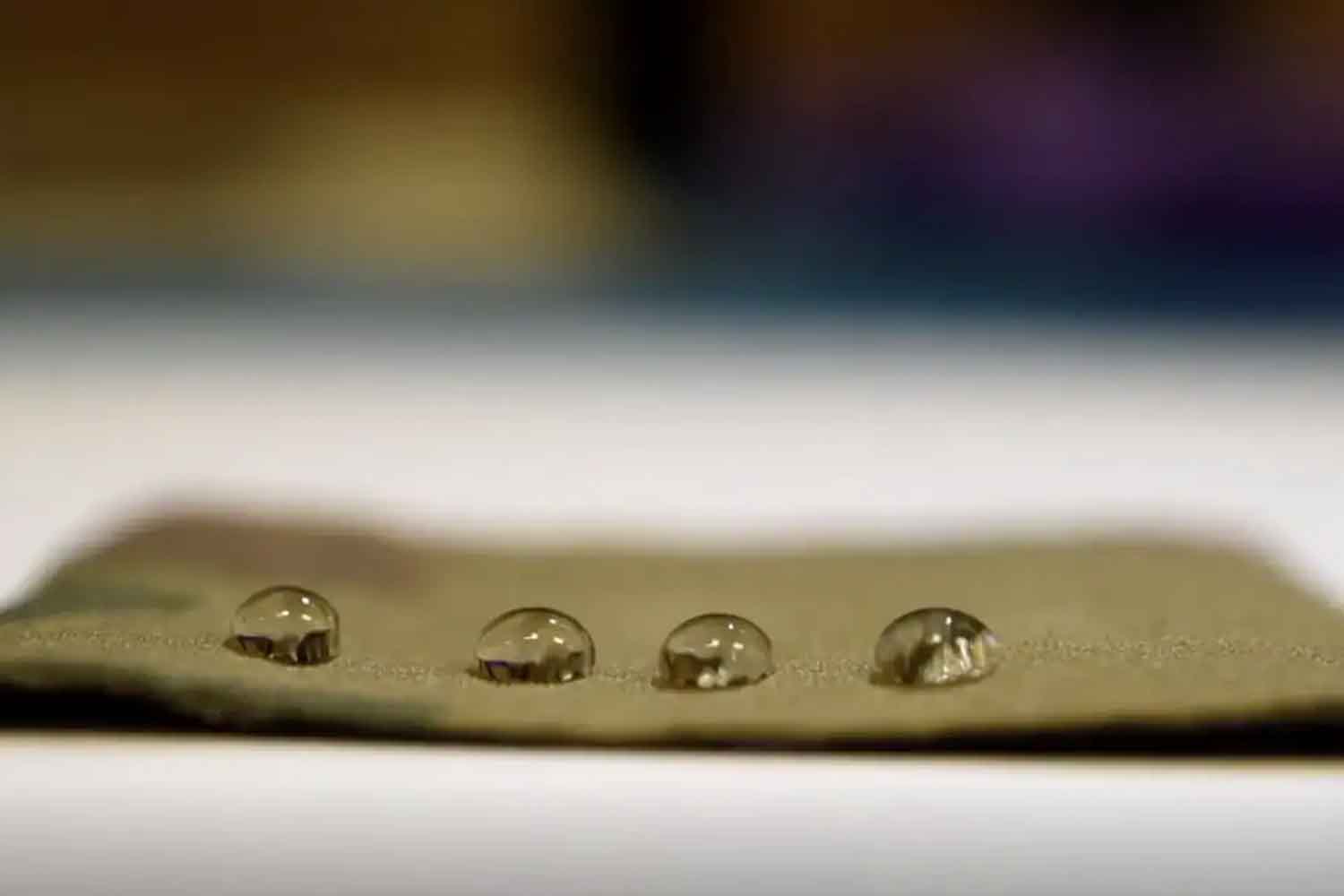Researchers at the University of Toronto have developed a PFAS-free non-stick coating as effective as Teflon, with significantly reduced toxicity and environmental impact.

©Samuel Au
A team of engineers at the University of Toronto has developed a revolutionary non-stick coating that can repel both water and oil with the same efficiency as Teflon—but without the use of PFAS, the notorious per- and polyfluoroalkyl substances linked to serious health risks and persistent environmental pollution.
Published in Nature Communications, the discovery marks a major milestone in the quest for safer alternatives to conventional coatings. And this isn’t just lab theory—the potential applications stretch from kitchen cookware to technical fabrics.
The problem with traditional non-stick coatings
For decades, the magic behind non-stick surfaces came down to PFAS. These synthetic molecules, built around ultra-strong carbon-fluorine bonds, are incredibly durable and capable of repelling nearly anything. But their resilience comes at a cost. Legacy compounds like PFOA, once widely used in Teflon, have been associated with cancer, birth defects, and long-term accumulation in the human body. Even newer, shorter-chain variants—while somewhat less dangerous—remain alarmingly persistent in the environment.
The chemistry world has been seeking a way out of this toxic trap for years. Now, that solution may have finally emerged from an unexpected place.
Inspired by feathers, made from silicon
The breakthrough centers on polydimethylsiloxane (PDMS), a silicone-based polymer already used in everything from medical devices to contact lenses. It’s heat-resistant, biocompatible, and generally safe—but on its own, it falls short in repelling oil.
To overcome this, researcher Samuel Au and his team developed a novel technique called “nanoscale fletching”, a nod to the feathered stabilizers that help guide arrows through the air. The concept is elegant: by grafting tiny –CF₃ (carbon bonded to three fluorine atoms) groups onto the ends of PDMS molecular chains, they created a coating that naturally forms a repellant outer layer. These –CF₃ tails migrate toward the surface, mimicking the oil- and water-repelling behavior of PFAS, but with far less fluorine involved.
High performance, low toxicity
The results were impressive. In oil repellency tests using the AATCC scale—a standard metric in the textile industry—the coating scored a 6, placing it on par with the best PFAS-based coatings currently available.
Critically, –CF₃ is the shortest and simplest of all PFAS structures. According to current research, it doesn’t bioaccumulate in human tissue the way its longer-chain cousins do. Instead, it breaks down into trifluoroacetic acid, a compound that the human body can eliminate relatively easily. It’s also far less toxic to aquatic life.
The coating also proved resilient in real-world scenarios. It performed reliably on porous fabrics, metal mesh, and aluminum, and held up under water jets, temperatures up to 392°F (200°C), and exposure to both acidic and basic environments. Even after repeated oil splashes, the surface remained dry far longer than traditional silicones.
Inching toward a PFAS-free future
Still, not everyone is ready to call it a perfect solution. Some environmental scientists caution that even short-chain PFAS like –CF₃ aren’t entirely harmless. Trifluoroacetic acid, for instance, is resistant to environmental breakdown, and its long-term ecological impact is still under investigation.
Yet, the quantities used in the new coating are extraordinarily small. As the researchers point out, “The total PFAS emissions from an entire treated jacket would be equivalent to just over an hour of refrigerant leakage from a car’s air conditioner.”
With the European Union currently considering a sweeping ban on thousands of PFAS compounds, materials like this could offer a practical bridge between today’s chemical realities and tomorrow’s clean technologies.
“We’ve shown that liquid repellency doesn’t depend on long fluorinated chains,” the authors note—a belief that has shaped the coatings industry for years. That’s a paradigm shift worth watching.
The road to a world without “forever chemicals” is still long, but this innovation suggests the finish line may be closer than we thought. For industries seeking high-performance, lower-toxicity alternatives, this coating may be a rare and welcome compromise.
Source: Nature Communications
